Are we entering a new chapter in the ongoing saga known as the Gar Wars?
Gar are primitive fish that have thrived for millions of years. They swam with the dinosaurs. They survived asteroids and Ice Ages. But modern society has been much less kind, because many people simply hate them. Accused of crimes they didn’t commit – including attacking people – they have been shot, netted, dynamited and electrocuted.
Recently, bowfishing – shooting fish with a bow and arrow – has gained new popularity, as enthusiasts ostensibly target invasive Asian carp. Unfortunately, they have also turned their arrows towards gar and other native species that are not protected as game fish.
More than two years ago, I wrote a story on the “Gar Wars” after seeing an article in Outdoor Life glorifying a bowfishing tournament, complete with dead piles of gar and other native fish. It included the usual justifications: that removing “rough fish” somehow made water healthier, that it helped increase populations of “game” species.
Following that story, gar researcher Solomon David wrote, “Seriously, practices/supporting articles like this make me believe we take 1 step forward, 5 steps backward in conservation.”

I know the feeling, as does anyone who tries to change attitudes about unappreciated and unfairly villainized native wildlife.
As a passionate angler, I frequent a lot of fishing social media groups and web sites, and the prevailing sentiments towards gar and other native “rough” species is dismaying. Myths abound: Gar decimate bass populations. These are trash fish that should be thrown on the bank. Some even claim they’re not native.
But as a student of wildlife conservation history, I know that many of the biggest successes have come when a small, dedicated, obsessed group of enthusiasts band together and make something happen.
When it comes to the Gar Wars, there’s a new hope.
A Fish Force Awakens
At one point, it was a lonely life for a garficionado living in a world of bass and walleye fans. With social media, like-minded native fish advocates can share stories and ideas – and make a difference.

Leading the gar charge on social media is Solomon David, now assistant professor of ecology at Nicholls State University. David’s seemingly endless enthusiasm for all things gar – including research, advocacy and plenty of fish puns – is infectious. He’s constantly seeking new ways to reach people with his message about these ancient fish and their role in ecosystems.
A growing community of anglers celebrates rather than scorns gar and other “rough” fish. The Roughfish.com site is dedicated to an appreciation for all fish, with a zero-tolerance policy for wasteful practices and negative attitudes towards these species.
Jeremy Wade’s television show River Monsters may be sensationalistic, but he also promotes a conservation message. His show on alligator gar – the largest of the gar species, and one of the largest freshwater fish on the continent – increased interest in this species as a trophy fish. Bowfishing guides that once targeted huge individuals of a slow-maturing species switched to catch-and-release angling, directly as a result of the interest generated from Wade’s show.
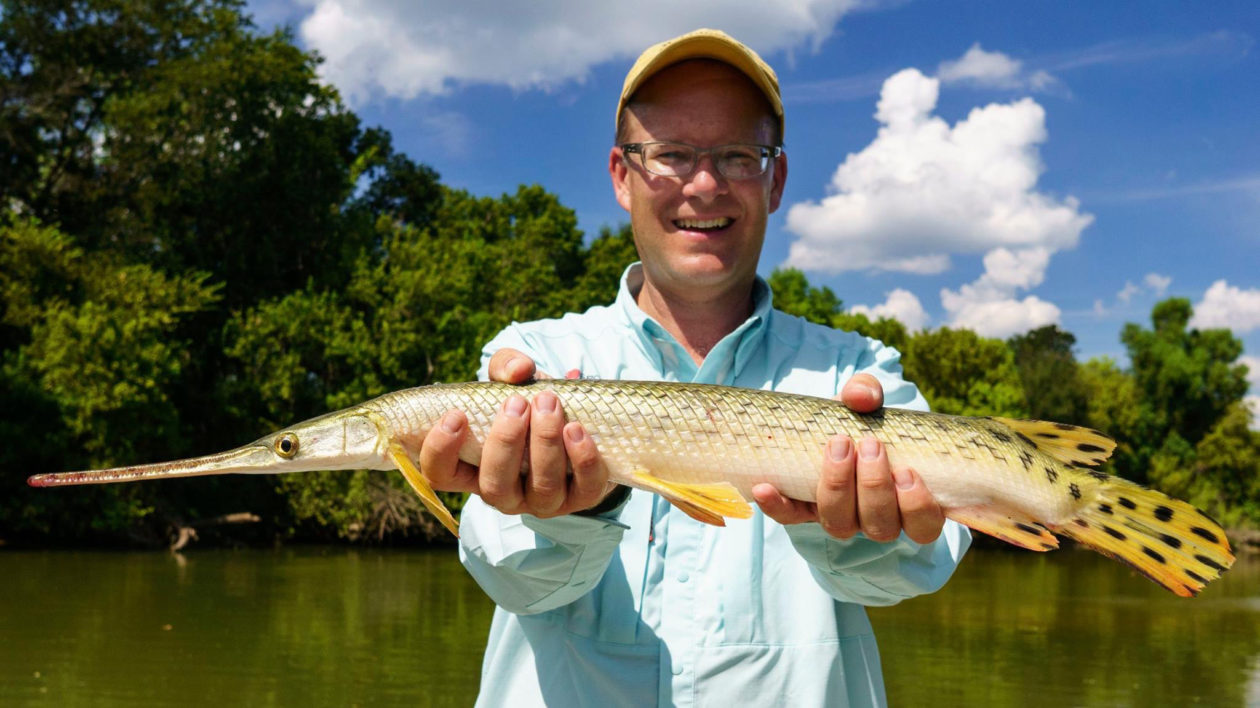
Perhaps the most dramatic gar victory occurred in Illinois, not by coincidence where Solomon David previously worked as a research associate with Shedd Aquarium. David helped launch the Ancient Sport Fish Project that researched population trends for gar and bowfin (another frequently maligned but insanely cool fish species). Many state natural resource departments largely ignore “non-game” species so just establishing this program was a big step.
A bigger step was Illinois officially beginning a reintroduction program for alligator gar. This required a lot of public support, fueled by the efforts of David and other passionate gar warriors like David Jakubiak of the Environmental Law and Policy Center and Olaf Nelson of moxostoma.com.
Ten years ago, reintroducing a large, “rough” fish would have seemed a quixotic quest. The current effort did attract some opposition from a boating association, with sensationalistic claims that the alligator gar would attack children. But the reintroduction program was approved last year, and alligator gar are being stocked in appropriate Illinois waters.
It’s a huge victory in the Gar Wars.
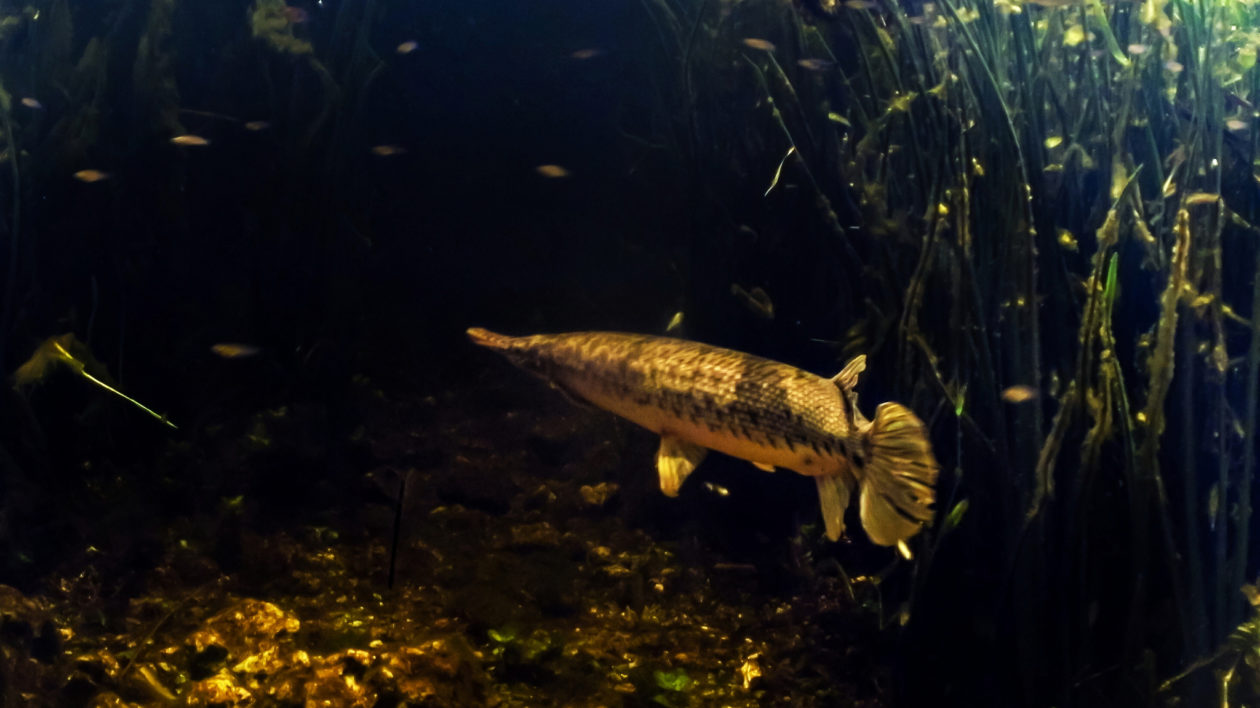
And even in mainstream outdoor publications, attitudes are changing. There are still articles that call gar “trash fish,” of course. But it’s becoming increasingly likely to also find articles celebrating them.
Johnny Carrol Sain wrote a recent story in Hatch Magazine, an online fly fishing publication, on bowfishing for gar. Sain shot gar with arrows, and didn’t give it much thought, until his wife asked if he ever thought about why he did.
“I had not. But I thought about it the next time a gar swam within range of my arrow,” he writes.
He stopped bowfishing, and instead reflected on mindless killing:
“Of course gar die. Everything dies. But dead gar piled on the creek bank somehow seem outside the circle and its exquisite tragedy. The act of killing without thought or purpose runs counter to natural order. It may be one of the few true evils in this world.”
For all native fish advocates: This is what progress looks like.

The Tricky Currents of Gar Fishing
There is an element of gar advocacy that I believe illustrates a larger point about wildlife conservation. It is this: Most of the passionate gar enthusiasts love fishing for them (me most definitely included).
I am well aware that gar have intrinsic value that has nothing to do with hooking them and reeling them in. Gar often float along the surface, making them a fish species you can actually observe from shore, and I have done so. Gar have a fascinating biology. You do not need to fish for them to appreciate that.
But, time and again, the most effective wildlife conservation is done by people who have direct experience with the creature in question. To spend time afield with wildlife creates a connection that can lead to conservation.
Populations of peregrine falcons were restored largely by the breeding efforts of falconers, those who hunt with birds of prey (and arguably the ultimate outdoor obsessives). Waterfowl are one of the few categories of birds not in decline – and that’s in no small part because duck hunters have protected their habitat. Our understanding of bird migrations and population trends is expanding because birders are gathering and sharing that information. The most effective wilderness advocates are those who actually spend time in wilderness.
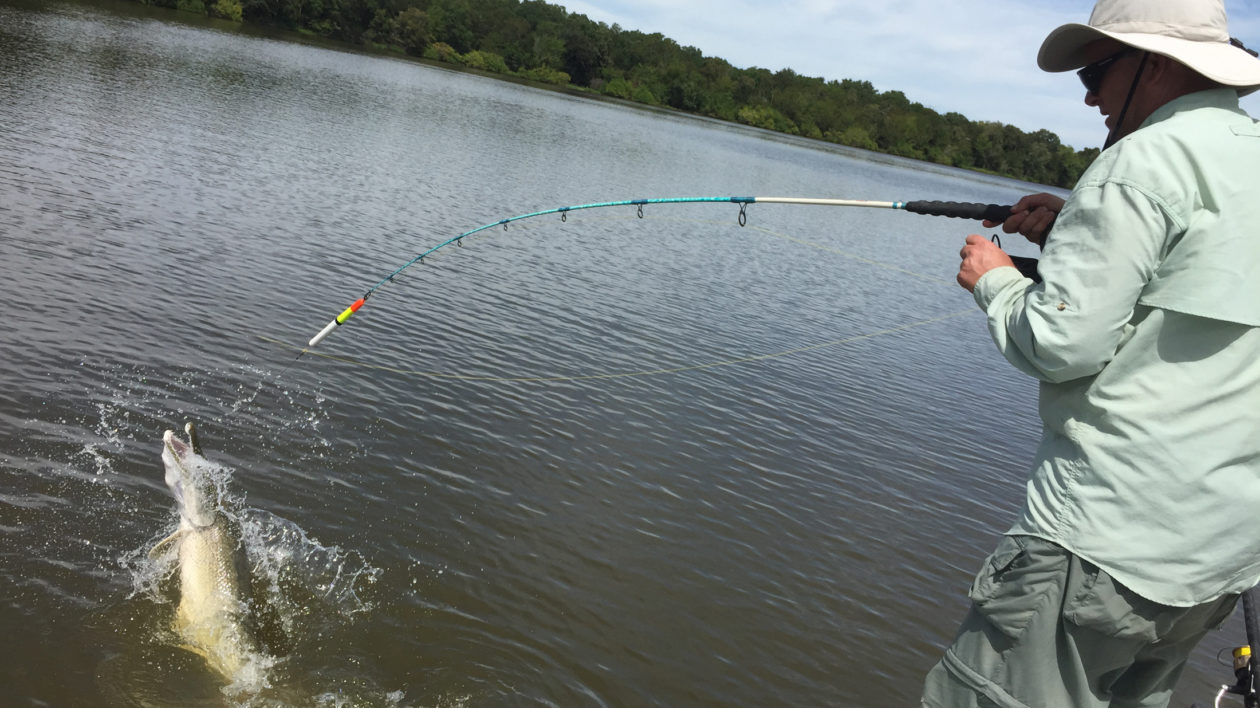
Yes, many people will support gar conservation because the value biodiversity, or because it’s the right thing to do. But gar anglers will likely continue to lead the charge.
But there are odd currents at work here. Anglers and hunters often loudly proclaim their role in conservation, but the reality is that a distressingly large percentage of hunters and anglers are ecologically illiterate. And I say this as a lifelong and passionate hunter and angler. I have seen far too many destructive practices, like killing “trash” fish (and mammal predators) for no reason other than ignorance.
The truth is, the wasteful killing of gar is driven by and promoted by anglers. But anglers are also the gar’s salvation.
How do we negotiate these waters? In part, ecologically minded sportsmen and women need to speak up. This can be difficult when it seems the folklore and fishy prejudice is everywhere, when fishing Facebook pages encourage anglers to throw suckers and gar on the bank (I see this weekly).
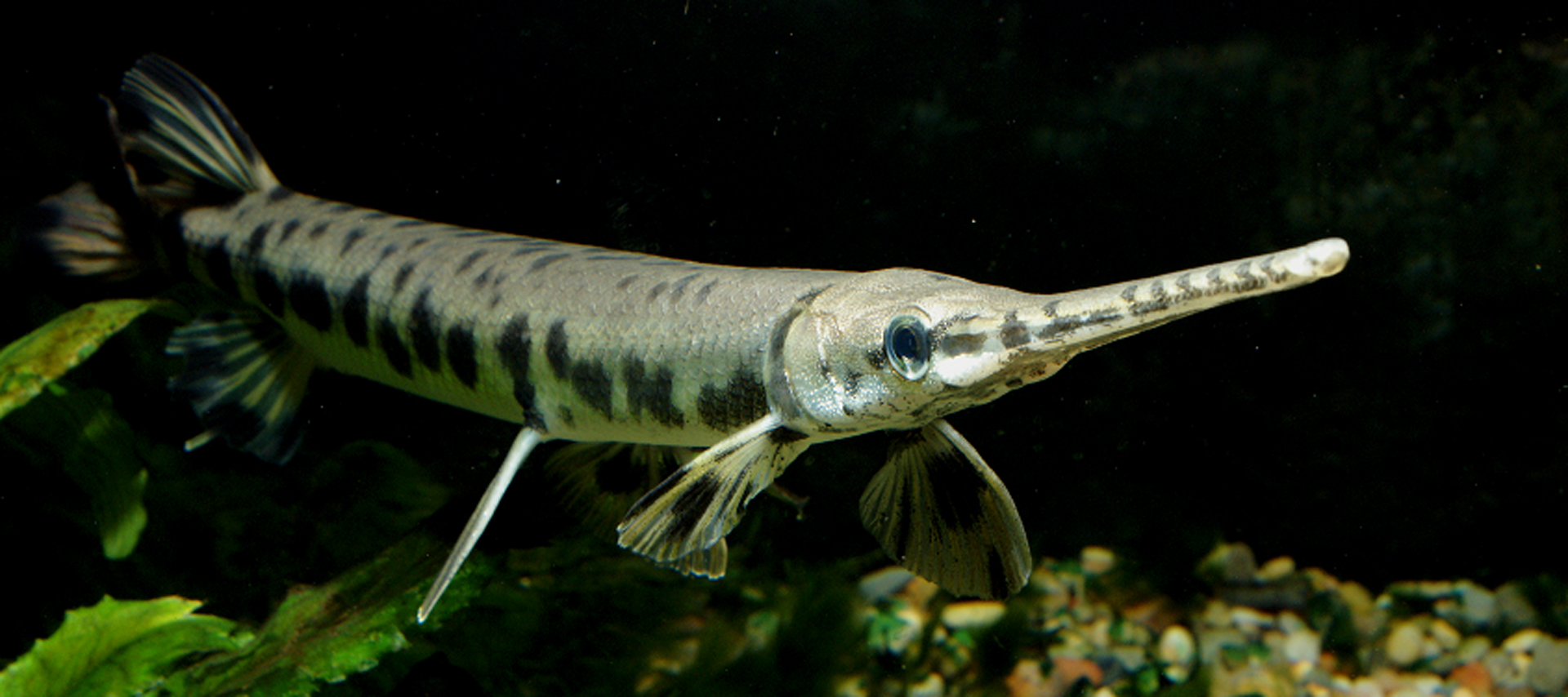
I think that, if gar advocates had not spoken up, we would not be seeing stories in mainline outdoor magazines questioning mindless gar killing. We would not have reintroduction efforts.
And oftentimes, it’s pretty easy to share a differing view to people who may not be killing gar out of malice, but just because they’ve never been presented an alternative.
Last September, Solomon David and I embarked on what we dubbed Gar Trek, looking at alligator gar fishing in Texas for a book project I’m currently completing. We spent a couple of days with a bowfisher-turned-catch-and-release guide, experiencing numerous encounters with big alligator gar. We dug trucks out of mud, ate way too much bad road food and accrued a level of grime and slime that may never come out of my fishing shirt. We stayed in a cabin with several wasp nests on the inside, enough mold to qualify it as a biodiversity hotspot and a bathroom and refrigerator that had last been cleaned in the Eisenhower presidency.
But the best memory is when we left the guide behind and struck out on our own, visiting a wildlife management area with purportedly large numbers of gar. We fished along weedy canals in the scorching Texas sun, with limited success. Meanwhile, every pick-up truck visiting the area stopped to see why on earth we were casting into those canals.

And when we told them, the result was always the same, “You’re gar fishing?”
And then Solomon would patiently explain why gar were cool, and that we had traveled a very long way to do this, and that they were actually quite fun to catch on rod and reel. And people would listen. And maybe later that night they’d be telling the story of two crazy guys who traveled across the country to go gar fishing, but maybe, just maybe, they began taking steps towards gar appreciation.
Late in the day, our bad luck continued. We had run out of water and all our food except two apples. We decided to call it a day.
“What are y’all doing?” the man hollered out.
“Gar fishing.”
He slowly drove away, but five minutes later he came rumbling back. “OK, do you mind if I ask another question,” he said.
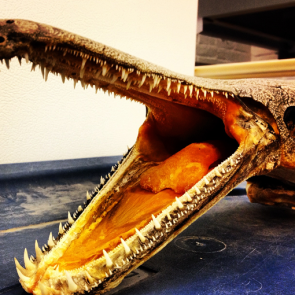
“Go for it,” I said.
“Why are y’all gar fishing?”
Solomon gave his answer and the man seemed surprised. Then he told us where we should be fishing, a dike system just a short drive away.
I was nearly delirious from dehydration and hunger. I looked at Solomon. “Let’s give it a try, just for a few minutes.”
These are always dangerous words, because it’s never a few minutes. Not when you’re obsessed with the outdoors.
We got to the spot and it indeed was filled with gar. We were targeting longnose and spotted gars so had relatively light fishing gear. But we immediately saw that this water also contained some alligator gar.
“What do we do if we hook into one of them?” Solomon asked.
“We’ll worry about that if it happens,” I replied.
It happened. One of the challenges of gar fishing is that it is quite difficult to set the hook in their tough snout. Gar are quite willing to slam a bait or lure, but keeping them on is another matter. (I actually find this an appealing aspect to the sport).
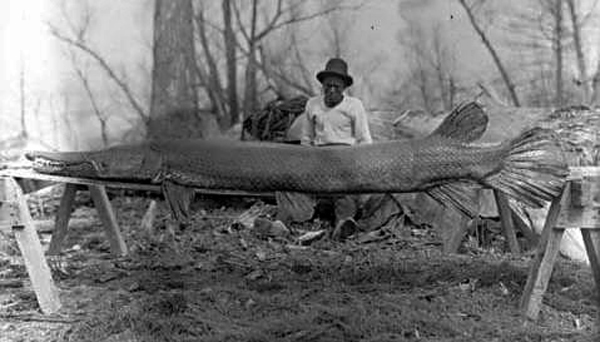
We had had a lot of action with the smaller gar, but had landed no fish. I retrieved a shad lure and suddenly saw a large shadow trailing. And then it was as if a depth charge exploded in the water. Alligator gar!
As my rod doubled, I turned to Solomon David. He was turning towards me, his own rod equally bent. An alligator gar double.
The next few minutes were characterized by exclamations, expletives, thrashing gar and pure chaos. Both of ours eventually broke off as we tried to get them to shore. But that was fine by me. Just having a close encounter with these awesome predators was enough.
But Solomon wanted a photo. We drove to get water and food, and a landing net. We returned, and within a few minutes, all hell broke loose again. I played the nice alligator gar slowly and Solomon scooped him into the net. We posed for some photos, and released the fish back into its lair.
I know some won’t get it, who will say I don’t need to harass wildlife to protect it. But for me, this encounter not only sticks in my memory, it spurs me to continue advocating for these magnificent fish. It inspires me to speak up against fishy prejudice and outdated attitudes.
And I believe these encounters will help awaken a larger native fish force. And so we go onward, always with those ancient fish on our minds.
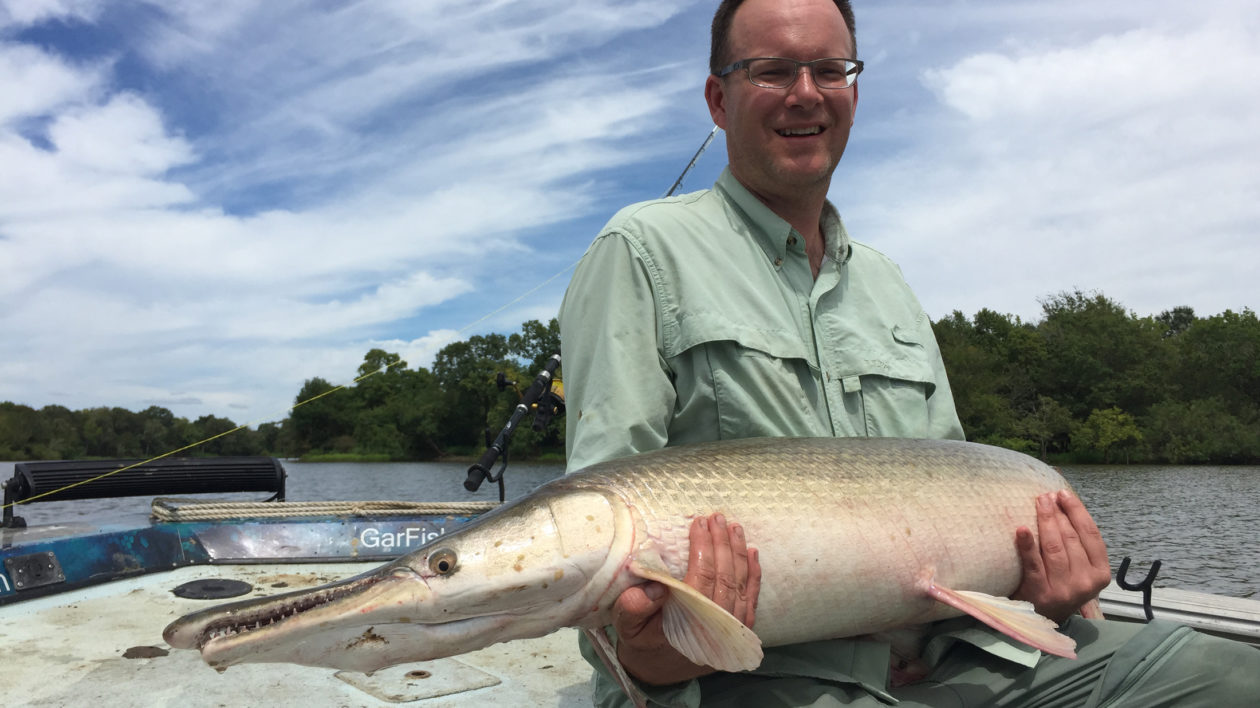
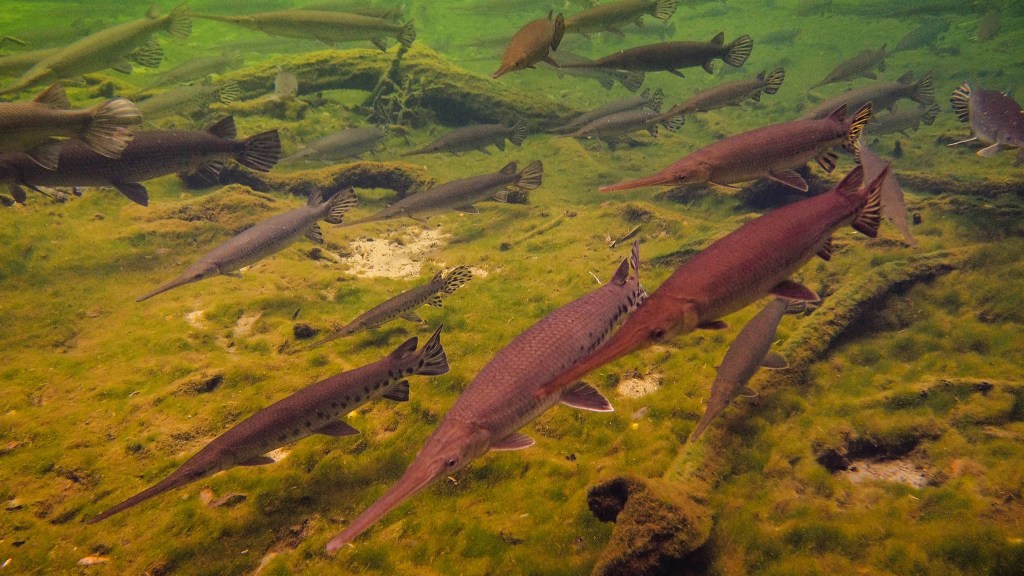



I am not an angler, nor a hunter. I was brought to your site simply out of sheer interest in what a Gar was. I was doing a search on Google for Gar, only because I had looked up the lyrics of one of my favorite country music songs (also not a true fan of the genre) called Seminole Wind by John Anderson
that includes the following chorus:
So blow, blow Seminole wind
Blow like you’re never gonna blow again
I’m callin’ to you like a long-lost friend
But I know who you are
And blow, blow from the Okeechobee
All the way up to Micanopy
Blow across the home of the Seminole
The alligator and the gar
If you are not familiar with the song, it speaks of the role “progress” has played in the land of the native Seminole in the Florida Everglades. The last word in the song is “gar”, of which I knew nothing of. My search led me to your Cool Green Science site/blog.
Thank you for introducing me to the Gar and it’s ancient past and it’s troubled and misunderstood existence. This also has reminded me of Kermit the Frog and his line, “It’s not easy being “green”. But when you are introduced and educated to things “green”, the science of it all is very Cool!
Thanks for writing. I do know the song…probably the only song that includes gar in the lyrics! I am glad it brought you to the site. I hope you look around as there are other stories on gar and similar fish.
Began with your horned owl post and then wandered to this one. It’s a great post, and I found it reassuring. I live on a Texas lake with gar in it, and that has always worried me (all those teeth!).
Now I know two new things: Gar won’t hurt me or my grandkids and the fish a few weeks ago that hit my bait (live shad) like a freight train, stripped so much line I feared I’d run out, and ended up getting away may well have been a gar–exciting! Thank you.
I am glad you found the blog and equally glad you learned more about the gar in your lake. I hope you have future encounters with them! Thanks for commenting. Matt